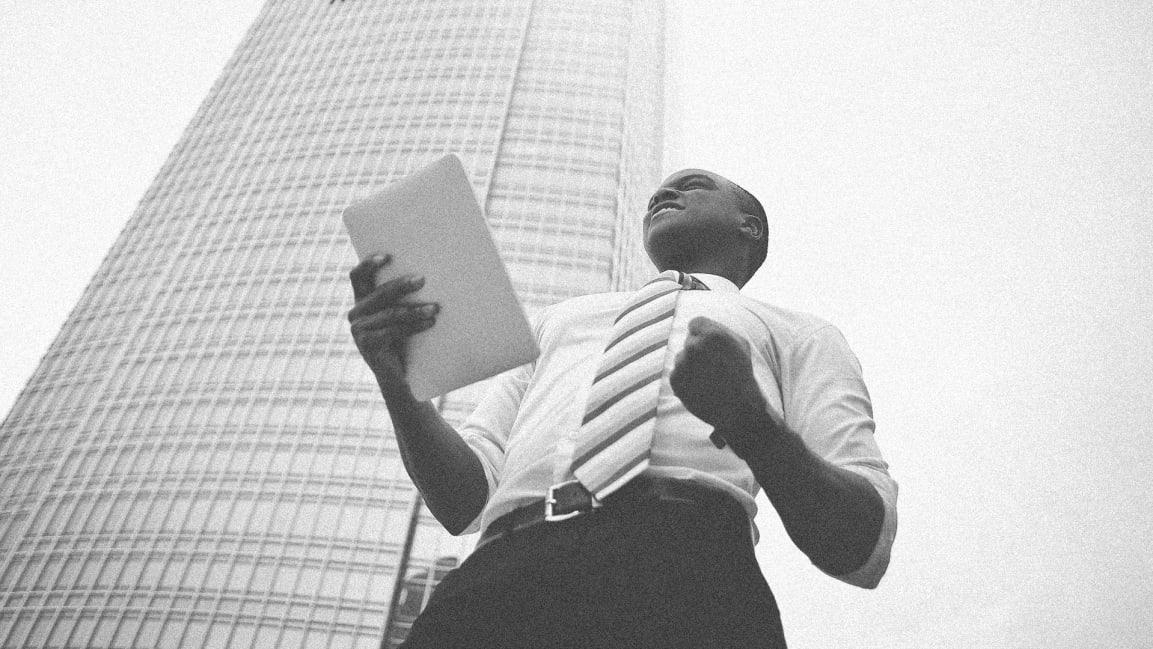You’ve secured a virtual interview. Now, land the job with these tips
According to a March 2020 survey conducted by Handshake, nearly 9 out of 10 employers in the U.S. have now adopted virtual interviewing as a standard part of their hiring processes.
The COVID-19 pandemic has led companies such as Amazon, LinkedIn, and Facebook to completely shift to doing virtual interviews instead of in-person interviews.
As a personal branding consultant, I frequently host webinars on how to manage virtual interviews. Recently, the same questions from job candidates have kept coming up. I thought I would take the opportunity to share my responses below.
Where should I look?
The best place you can look during a video interview, especially when speaking, is directly at your web camera. When you’re speaking, the person on the other end will inevitably be looking at your video on their screen, so the best way you can mimic “eye contact” is to look directly at the camera capturing your live video.
When you look at the actual video of the other person, another application on your screen, or anywhere off-screen, it can seem like your attention is focused away from the other person.
With that said, you may want to occasionally look at the other person’s video to get a sense of how they’re visually responding to what you’re saying. The best way to do this is to move their video window as close to your webcam as possible, typically the top-center of your screen. Then shrink your conversation partner’s window down so the distance between their face and your webcam is minimized.
How should I take notes?
The best way to take notes is actually using old-fashioned pen and paper. To preclude any doubts about what you’re doing, the first time you go to take notes, hold your notebook and pen up to the camera and inform your interviewer that if they see you looking down it is because you’re taking notes.
Although incredibly convenient, typing notes directly on your laptop can be distracting because the clicking sounds will inevitably get picked up by your microphone. Also, according to Kevin Parker, CEO of HireVue, one of the world’s largest virtual interviewing platforms, typing on a laptop or phone can too easily be mistaken for multitasking.
Is it okay to use my built-in laptop microphone?
Built-in microphones on laptops keep getting better, and the resulting audio will likely be acceptable. However, as the host of a podcast, I’ve found that my guests who use built-in computer mics often don’t come across as clear as others. First, the quality of built-in mics tends to be worse than external mics. Second, your voice will sound more distant. Third, the room echo may get picked up. And last, any extraneous sounds you make by touching your laptop or even writing on a notebook may also get picked up.
Instead, consider using an external lapel microphone you attach directly onto your clothing. These mics enable the highest quality audio without obstructing your face like a handheld or stick mic. In order to hear the other person, try using wired or wireless earbuds.
Should I use a virtual background?
Popular videoconferencing apps such as Zoom and Skype offer virtual backgrounds, which can look surprisingly real. However, for an interview, I recommend abstaining from virtual backgrounds.
First off, the intended effect often comes off as unconvincing. Most virtual backgrounds still look, even to the untrained eye, artificial, so viewers might wonder why you’re choosing to hide your real background.
Second, you might be interviewing at a time of day inconsistent with the imagery behind you. You can imagine the confusion if you have an image of a sunny living room behind you in the middle of the night. Third, you can’t count on all platforms supporting it.
Finally, the technology isn’t quite there. All it takes is for you to move your arm quickly, and suddenly, that pile of dirty laundry behind you becomes momentarily visible, which is at its best distracting and at its worst embarrassing.
Should I have objects in my background to convey my personality?
You might think having a few personal items such as picture frames, decorations, or bookshelves in your background may add some visual interest to your video frame. However, unless you’re an interior designer or the objects behind you are directly relevant to the role you’re targeting, having objects in your background can distract or even elicit negative reactions.
The safest approach is to simply have a neutral-colored, plain background, such as a simple wall behind you. Using this background conveys how prepared and professional you are when it comes to remote videoconferences. This way, the interviewer can also focus all their attention on you rather than wondering whether they prefer the piece of artwork behind you.
How do I handle small talk at the beginning?
A good rule of thumb to follow with virtual interviews is to behave as if you’re meeting that individual in person. Therefore, when it comes to small talk, just be yourself and converse as you would if you were meeting your interviewer for the first time.
The amount of small talk your interviewer wants to engage in will be driven by cultural or organizational norms, but also their personality. Overall, do your best to read the situation. From there, you will get a sense of when the small talk should wrap up and when the interview should begin (most likely, the interviewer will take charge on this step).
What if my Wi-Fi or broadband speeds aren’t great?
You should address as many tech issues as possible before the interview kicks off. Even though it may not be within your control, being on a poor connection isn’t going to help your cause, especially if other candidates are not wrestling with similar tech issues.
If your Wi-Fi signals aren’t great, try to do the interview from a place where you can have a solid connection. You can also take small steps to improve speeds. For example, try to plug your device directly into your router. Close all other programs, especially those that constantly sync in the background, such as email or file-sharing programs. You can also turn off any other devices in your house that are using the same network.
Barring this, if you absolutely have no way of getting a solid connection, you could see if the option exists to do a phone call. However, in an employer’s market, you may discover deviating from the requested interviewing format will likely not work in your favor.
What is the essential virtual interview tip?
Ultimately, you’re just trying to create the most favorable, professional image possible and convince a hiring manager you’re qualified for the role. A good rule of thumb is to act as you would if you were meeting the hiring manager face-to-face. Adhering to this principle minimizes any friction caused by the virtual interview format itself, allowing your interviewer to focus on who you are and the value you can offer.
Whenever you’re doing a virtual interview, it can be easy to get distracted by the subtle discrepancies of a digital medium. Following this set of guidelines will minimize the chances of an unforced error, where a video glitch or small technicality is the reason a hiring manager rules you out.
Joseph Liu is a public speaker, career change consultant, and podcast host. Hear stories of career reinvention on his Career Relaunch podcast, and follow him on Twitter at @JosephPLiu.
(26)



